Easy Way to Make a Twelvesided Dice
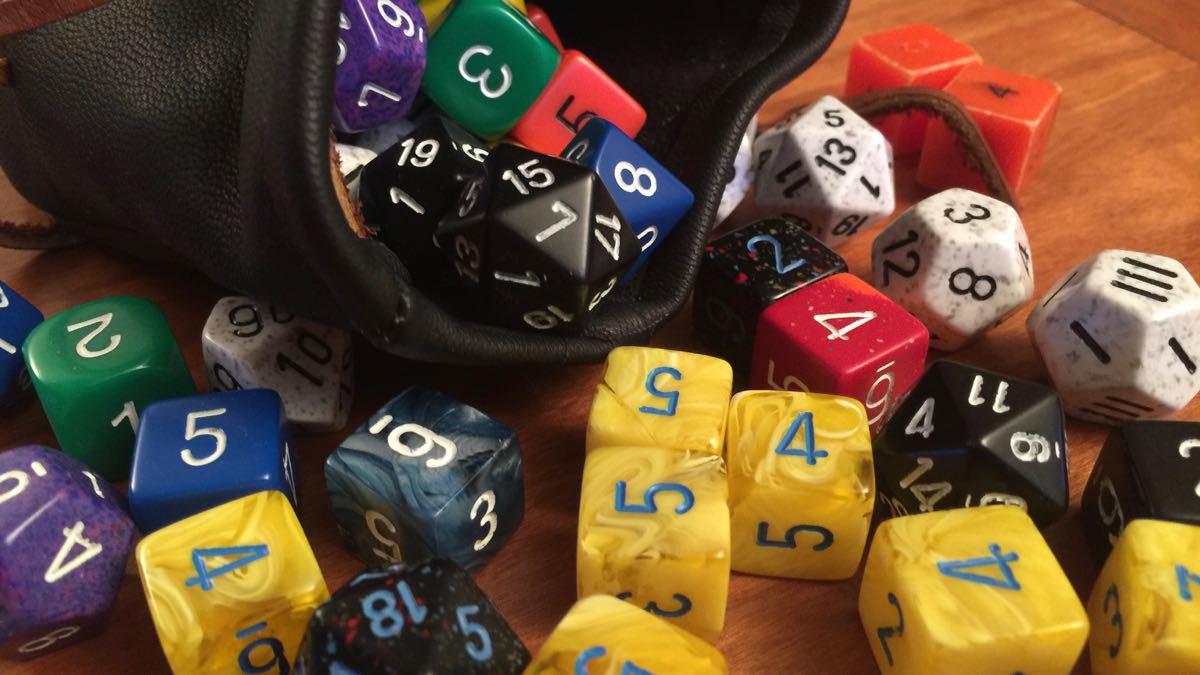 Dice, oh wonderful dice– they are an integral part of roleplaying games. In the old days, the grognards had to use a crayon to fill in the numbers on dice, and before that, they used cut-out pieces of paper selected from a cup for their 20-sided dice rolls! Now-a-days, there's an enormous supply of varied and interesting dice to appeal to all types of gamers. For games likeD&D, and Pathfinder most people pick up the standard set of seven polyhedral dice — a four-sided (d4), six-sided (d6), eight-sided (d8), ten-sided (d10), ten-sided percentile (d10 in 10's), a twelve-sided (d12), and the classic twenty-sided (d20) dice. This is enough to play the game, and certainly where most people start.
Dice, oh wonderful dice– they are an integral part of roleplaying games. In the old days, the grognards had to use a crayon to fill in the numbers on dice, and before that, they used cut-out pieces of paper selected from a cup for their 20-sided dice rolls! Now-a-days, there's an enormous supply of varied and interesting dice to appeal to all types of gamers. For games likeD&D, and Pathfinder most people pick up the standard set of seven polyhedral dice — a four-sided (d4), six-sided (d6), eight-sided (d8), ten-sided (d10), ten-sided percentile (d10 in 10's), a twelve-sided (d12), and the classic twenty-sided (d20) dice. This is enough to play the game, and certainly where most people start.
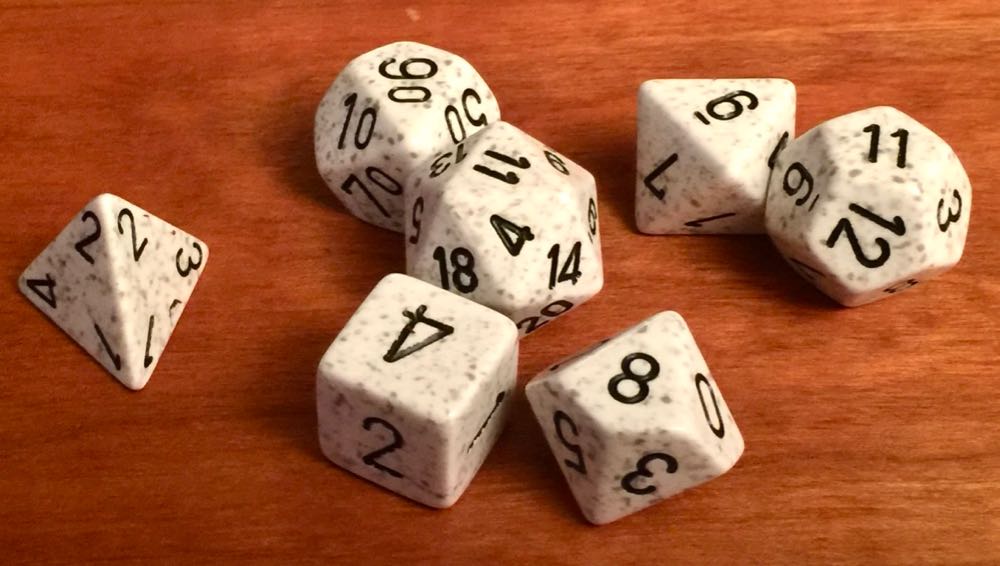
There are countless great sets of these seven polyhedral dice available — tons of colors, patterns, and most any theme you could think of. They make great gifts, and I like to give players I'm introducing to roleplaying a set. Recently in an after-school board game club the students wanted to try a roleplaying game. I let them pick from these dice that came with a dice bag and when my son started DMing his drama club, we bought this huge set of dice and these little dice bags so everyone could start off right. The set came with plenty of dice to give everyone some choice.
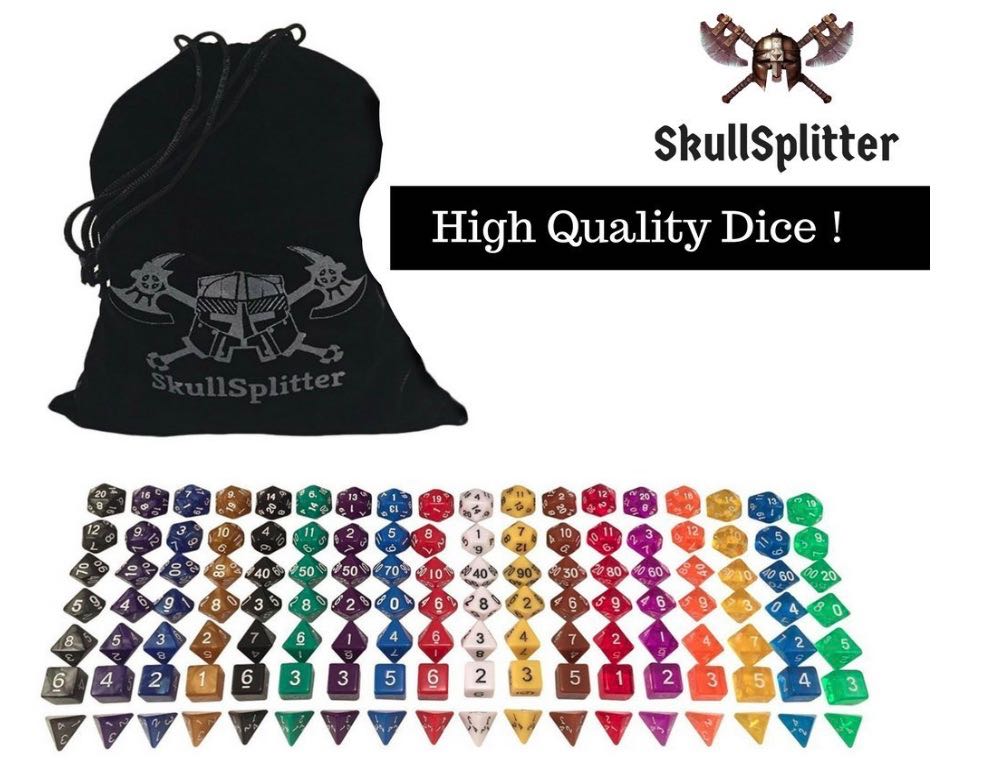
Seven dice are not enough
A single set of seven dice meets the needs of playing the game, and having your own set is far better than everyone trying to share a set, but pretty quickly you'll find it's not going to suffice. It may solve the needs of your 1st level character, but as the characters level-up, you'll slow down the game as you roll your single d6 five times to get your 5d6 fireball damage. Don't be "that guy" rolling your single dice over-and-over, and certainly don't be that guy that goes grabby-handing everyone else's dice. It's flu season after all.
What are the right dice for a player?
As a player I make sure I have enough of any dice that I may need to roll at one time. As an example myPathfinder magus uses a cutlass that does d6 damage, but it's enchanted with the fire property for another d6 damage, and when he casts shocking grasp through the sword that's another 9d6 of damage at his current level. That's a total of 11 six-sided dice (11d6) that I ensure I have on hand. A tenth level wizard blasting with a fireball should have 10d6 available, or the thief that does 6d6 of sneak-attack damage should have six six-sided dice, in addition to the d4 for the dagger's weapon damage for instance.
Nothing slows down the game more than one character saying, "I cast burning hands" and then have to hunt around for d4s, borrowing from all the other players to make the 5d4 roll, only to have those other players hunting around for their missing dice when it's their turn to roll. As a player, have what you know you'll need on hand.
Further, I color code the dice. Using my ninth level magus as an example, my d20 "to-hit" dice color matches the d6 that represents the weapon's slashing damage. I have a red d6 for the fire damage, and nine yellow six-sided dice for the 9d6 of electricity damage from shocking grasp. When it's my turn, I roll all twelve dice at one time. If the d20 shows a miss, then I ignore all those other dice, but if it's a hit, then the damage has already been rolled and I start the task of counting up the awesome damage.
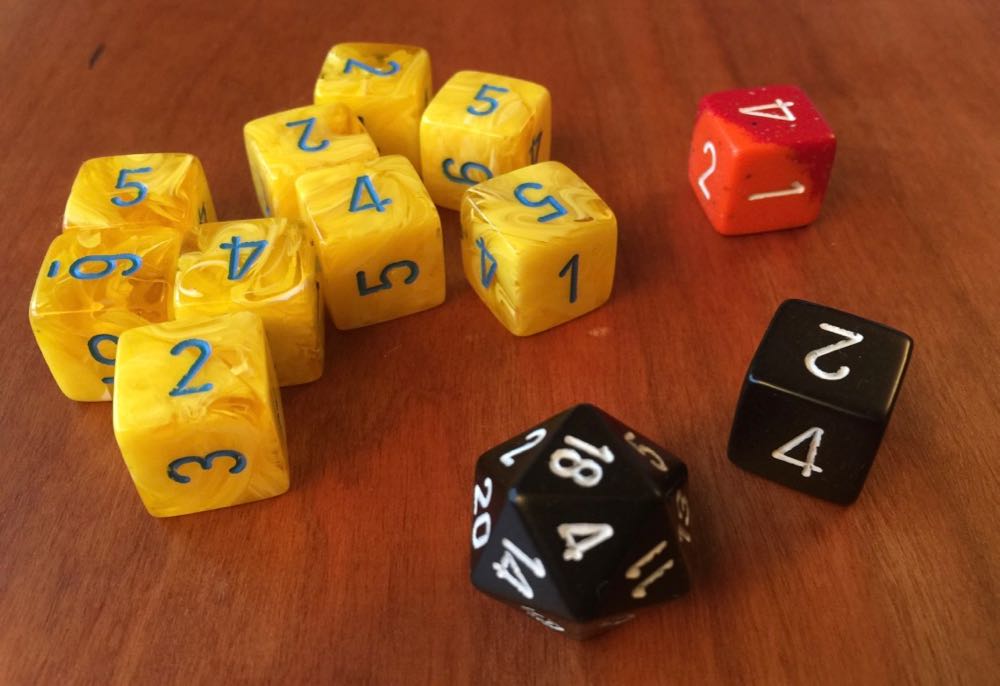
This is much faster, getting my turn done more efficiently, and getting to the next player as quickly as possible. Why the different colors? Some creatures are immune to fire, or electricity, or reduce certain types of damage, so quickly knowing which was what type of damage is helpful, if not necessary. Plus, I like that visually I can see what the sword is doing. It's like a little infographic sprawled out on the table– a dice-o-graphic, if you will. Not only is this a much more efficient way to resolve the mechanics of your turn, but there's nothing more satisfying at the table than rolling a huge wad of dice!

I know there's some debate out there that for story reasons some people prefer to roll the d20 to hit, and then after determining if the swing was a hit, rolling the damage separately. This does not really affect how many dice you should have on hand though. It's still better to have the right number of each dice you might need. One d20 for the to-hit roll, and in the case of my magus, if you determine you hit, then roll 11d6 all at once to satisfy the damage portion of the roll. You can roll the d20 separately or all together with the damage, however suits your gaming-group's style, but both ways are much quicker than rolling a single d6 many times, or trying to collect up all the dice you need after rolling the d20.
It is pretty easy for you to know exactly what dice and how many you may need to roll for your character. Just look at your weapons, special abilities and such and determine what the most of each type of dice you might need. A wizard may ultimately be rolling 20d6 for some spells. A fighter, whom ultimately gets four attacks per round (in Pathfinder) may want four different colored d20's and corresponding weapon damage dice. I know that my magus maxes out at 10d6 for his shocking grasp spell, so I bought 10 yellow d6's for instance. I only have nine at the table at the moment, since that's his current max. When it's time to roll shocking grasp, I just grab all available yellows– no need to waste time counting them out.

The right dice to have on hand will be different for each character, and may be different based off of player and table styles. If you play different characters frequently, then having a set for each character not only allows you to quickly grab the optimum dice for your character, but, more importantly, it gives you a reason to buy more dice!
Some alternatives
I hate standard D4s, you can't easily pick them up, and you don't roll a traditional d4, you sort-of just flop it on the table. It is not satisfying by any means. Instead of the standard pyramid style d4's I like to use 12-sided dice with roman numeral I – IV listed three times on the dice— dodecahedrons make for a much more satisfying roll! I also found some d4's that are shaped like a d6, but with two rounded sides, so only four of the faces are achievable. There are also options for d3's such as this d6 with 1-3 listed twice.
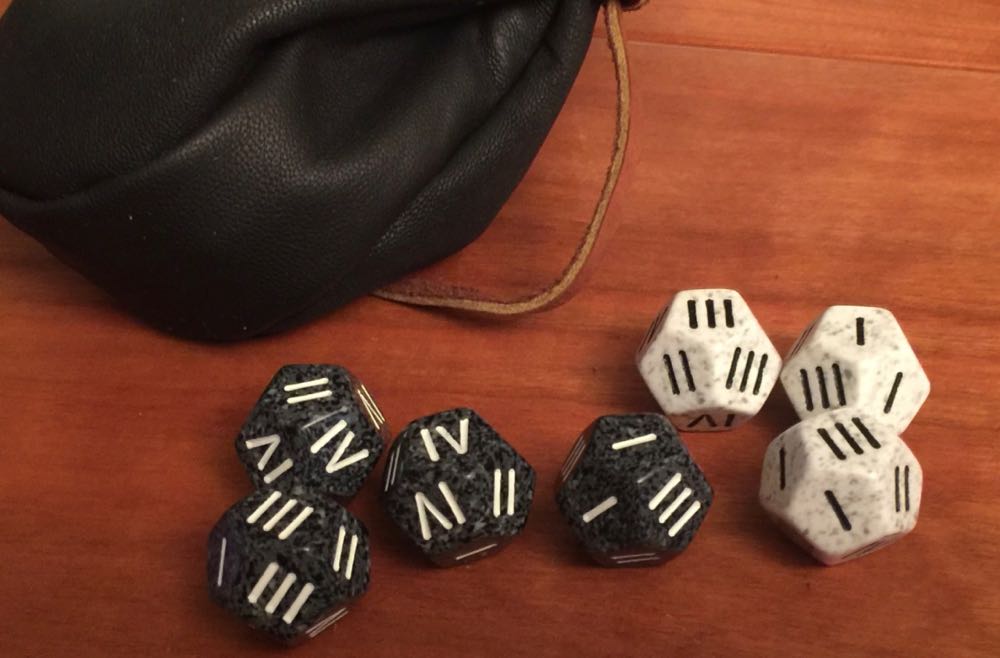

I think it's clear that the standard seven-dice set is enough to play, but having more dice makes the game run more efficiently, while also providing for easier and more satisfying rolls. While color coding, and having dice specific to your character type is an excellent idea for a player, the situation is a little different for the dungeon master. In my next post I'll discuss the perfect dungeon master's dice set.
Until then, you've got a reason to go buy some dice!
Part 1: Build the Perfect Roleplaying Dice Set | Part 2: Build the Perfect Dungeon Master Dice Set | Part 3: So Many Dice! Where Do You Keep Them All?
Source: https://geekdad.com/2018/02/build-perfect-roleplaying-dice-set-just-many-dice-need/
